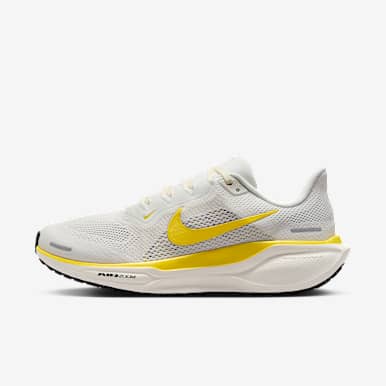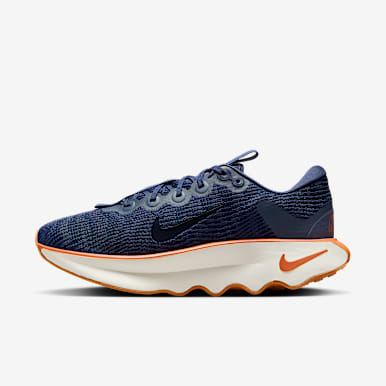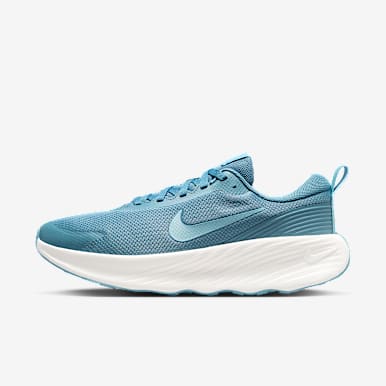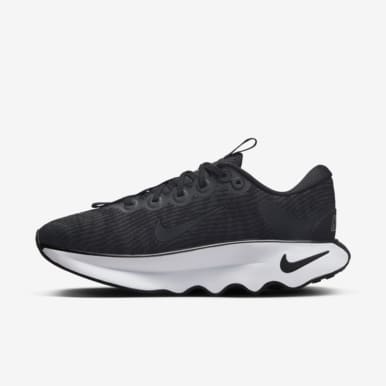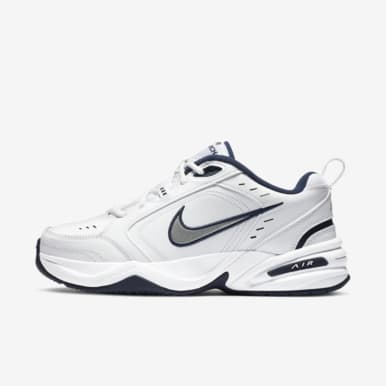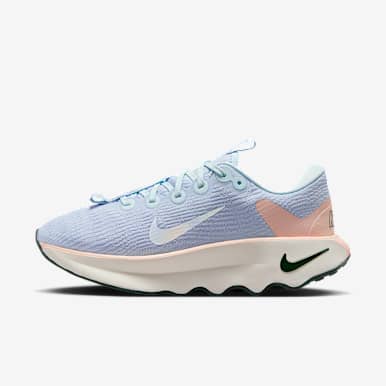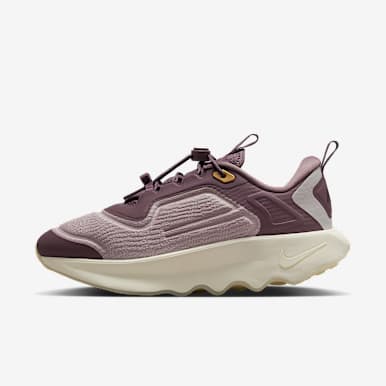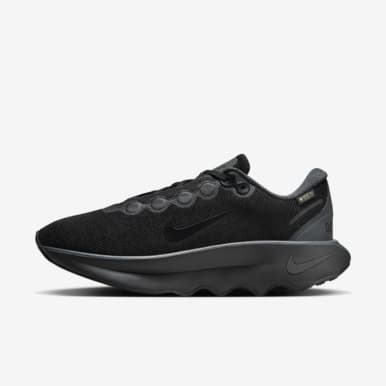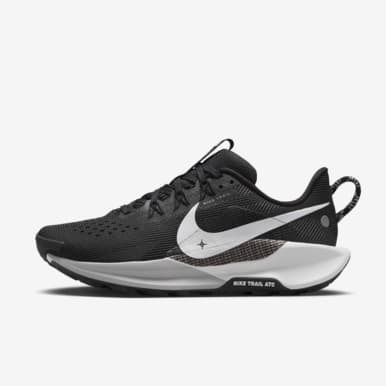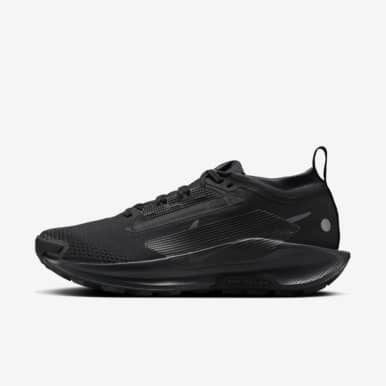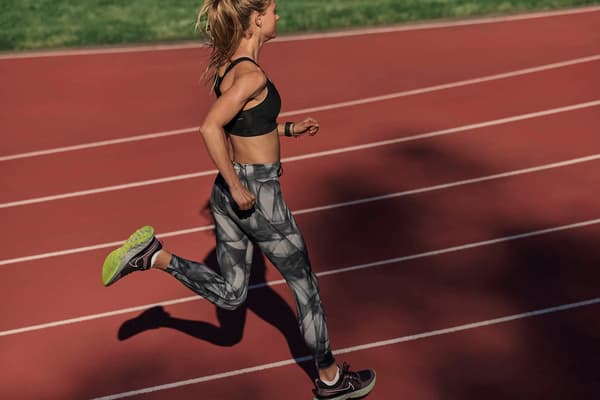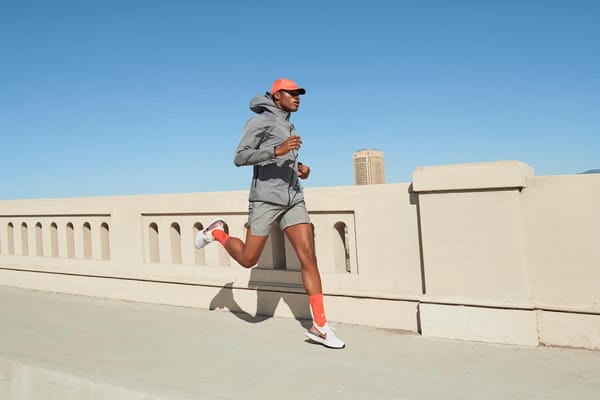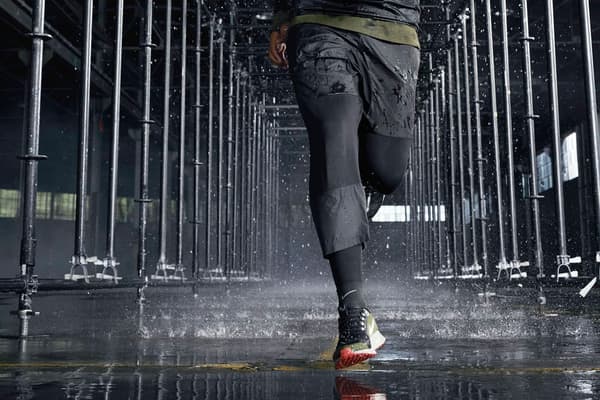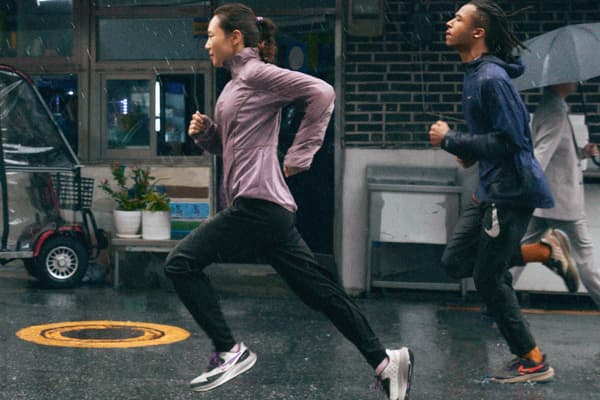How to Pick the Right Walking Shoes for Miles of Comfort
Buying Guide
Whether you're going for a short stroll or exploring a new city, it's important to have shoes that support you. Here's how to select the best walking shoes.

Your feet have taken you down city pavements, up steep mountain trails and along dirt roads, allowing you to explore your surroundings at your own pace. Those two feet deserve to be cradled in comfort. Whether you're taking a stroll around the neighbourhood or embarking on an adventure across the country, the right pair of walking shoes will help get you there.
There's no one perfect pair for everyone, however. Finding the best walking shoes for your feet depends on what you hope to get out of your journey. Here's how to find the perfect-fitting pair for miles of comfort.
6 Essential Features of a Walking Shoe
As you shop for walking shoes, pay attention to how the shoes are constructed. To ensure they're designed for walking, look for:
- A toe box that has plenty of space for you to wiggle your toes and doesn't cause calluses
- A heel collar at the back upper of the shoe that cushions the heel, creates a snug fit and has a firm internal structure to protect the Achilles tendon
- An upper that keeps your foot in place and wicks away moisture, while shielding your foot from the elements
- An insole with plenty of cushioning and arch support
- A midsole with gel, memory foam or air to reduce the impact on your foot as you step
- An outsole that provides the proper traction for your typical terrain, such as lugged soles for walking the trail or flat soles for stability on roads
Evaluating Stability and Cushioning
When choosing a walking shoe, it's important that it stabilises your foot without restricting your movement too much. If you're trying a pair on, you should feel moderate resistance when you try to twist your foot in the shoe. And when you bend the toe, make sure it doesn't bend too far up the arch—you should notice that it folds at the ball of the foot. If you want more support at the base of your foot, opt for a pair of hiking boots or trail running shoes, which have wider outsoles.
The amount of cushioning you'll need largely depends on your pace and distance. A good walking shoe should have enough cushioning to absorb the shock as your foot hits the ground, but not enough to weigh down your feet and slow you down. Avoid zero-drop, minimalist shoes without sufficient cushioning.
Most walkers will also want to look for a shoe with a low heel-to-toe drop, as a high drop can alter your stride. And a shoe with a low heel-to-toe drop will have the same amount of cushioning under the forefoot as under the heel for even weight distribution.
Tips for Finding the Right Fit
- Never rely on a break-in period when buying new walking shoes. The right shoe will feel comfortable the moment you step into it.
- Don't worry about correcting pronation, or the rolling of your foot, unless it causes you pain. Whether you have flat feet or high arches, you can benefit from a neutral walking shoe.
- That said, you should always make sure you walk around in your shoes before you decide to keep them. Luckily, Nike offers a free 60-day trial on any pair of shoes. You can even return them after taking a stroll outside if you're not satisfied.
- Measure your feet to find the right size, especially if you're shopping online. If you're buying unisex walking shoes, you can use this Nike size chart to convert from men's to women's. Also make sure you measure the width of your foot and choose a walking shoe for wide feet or narrow feet if necessary.
- If one of your feet is larger than the other, opt for the size that best fits your larger foot.
- Try on your new kicks in the evening, as your feet will swell over the course of the day. You'll want to make sure they're not too tight, even for moonlit strolls.
- Wear the same moisture-wicking socks you'll wear when walking to try on your shoes.
Prioritising Your Walking Needs
No single pair of walking shoes will be right for every trek. Do you value comfort above all else, or is it more important to have a shoe that performs well over long distances? What kind of terrain are you most likely to encounter on your walks? And finally, how important is the shoe's design and colour when considering adding a pair to your wardrobe?
Whether you prioritise comfort, miles, style or trail, you'll find a pair of Nike walking shoes that meet your needs.
COMFORT
Maybe you walk a few miles every morning before work or take long, meandering walks with a friend, partner or four-legged companion. You want cushioning and comfort, and you want it from the first step.
Look for shoes with Nike React cushioning, which is both soft and responsive. And select a pair with a comfortable upper as well. A Nike Flyknit upper will support you in the areas you need it most, while providing flexibility, breathability and a sock-like feel.
MILES
If you log serious miles (sometimes at a serious pace), you want an efficient performance shoe. Choose a pair that's supportive and stable and has lightweight foam cushioning to absorb shock. Nike ZoomX foam will give you the greatest possible energy return, so you can go the distance.
STYLE
So you want to turn heads in the street? Or on the track … or even at the supermarket. But you still deserve comfortable shoes. Luckily, some of Nike's most iconic shoes provide cushioning and support while bringing style to every step. For example, Nike Huarache sneakers are a timeless yet bold addition to any '90s-inspired wardrobe.
TRAIL
You're not afraid of dirt and want traction to tackle the trails. You always opt to be outside and like to see mud on your soles. If that sounds like you, snag a pair of trail running shoes with an upper that protects your feet from rocks and debris, a midsole that cushions and stabilises and an outsole with sufficient traction to handle rugged terrain. Nike trail running shoes provide both durable protection and ventilation, so your feet can breathe as you explore the scenery.
DESIGN AND MATERIALS
While browsing Nike walking shoes, keep an eye out for these keywords to help you pick the best pair.
- Zoom: responsive and lightweight for training and race day
- React: soft and springy, yet light and long-lasting for all-day comfort
- Air: maximum cushioning and responsive for a fun ride
- Free: minimal and flexible for a natural feel to set your feet free
- Shield: water-repellent shoes, because wet weather can't keep you from walking
- Flyknit: a snug, sock-like upper that's like a hug for your feet
- ACG: All Conditions Gear to get you outside in, well, all conditions
Walking Shoes vs Running Shoes
You'll find Nike's walking shoes listed as running shoes, but don't panic. Our running innovations can take your walking game up a step too.
Though they happen at different speeds and involve different degrees of shock absorption, the same pair of shoes can accommodate both walking and running movements. Nike shoes are designed to keep you moving, and they'll be there for you, step after step, mile after mile.
Walking Shoes vs Hiking Boots
Hiking boots are similar to trail running shoes, which can also be used for walking or running off-road. However, there are some key differences between hiking boots and walking shoes:
- Hiking boots tend to offer more stability for uphill climbs, but they're also heavier than walking shoes, and that can slow you down.
- Hiking boots are more durable and will hold up better against the elements, but they're also less breathable.
- Hiking boots provide more warmth in the cold weather, while walking shoes keep you cool all summer.
- Walking shoes are more versatile than hiking boots, while still providing traction. You can use many walking shoes for running as well.
Frequently Asked Questions
What Shoes Are Best for Walking?
The best shoes for walking will fit properly and provide the right amount of cushioning and stability. Opt for a shoe that supports your foot without being too restrictive and absorbs shock without feeling too heavy. You may find that road running shoes, trail running shoes or hiking shoes can be worn comfortably for walking as well.
How Often Should You Replace Walking Shoes?
According to the Mayo Clinic, you should replace your walking shoes every 300 to 400 miles. That's about every 6 months if you're walking about 30 minutes a day. If you're not sure how long you've been walking in your shoes, look for signs of wear on the outsole. If the tread pattern is wearing down or the shoe leans to one side, it's time to grab a new pair. Trust your feet as well—if you're feeling less shock absorption or any new discomfort, buy a new pair of walking shoes.
How Many Pairs of Walking Shoes Should You Have?
It's a good idea to have at least two pairs of walking shoes so you can alternate which ones you wear. A February 2015 study published in the Scandinavian Journal of Medicine and Science in Sports confirmed that rotating your shoes decreases your risk of foot injury by 39%. And if you buy two pairs now, you won't have to think about replacing them as quickly.
What Are the Most Comfortable Walking Shoes for Travel?
Tourists typically walk for miles as they explore their new locale, so if you're planning a trip, make sure you bring a good pair of walking shoes. Choose a shoe that's efficient but still has plenty of cushioning to absorb the repeated shock of walking long distances.
What Are the Best Shoes for Walking with Plantar Fasciitis?
If you have pain in your heel (a sign of plantar fasciitis), the right pair of walking shoes can help reduce your discomfort. Choose a pair with plenty of arch support and a midsole that's firm without being rigid. Though most walkers do well with a low heel-to-toe drop, you might benefit from a higher drop if you have plantar fasciitis. Just make sure there's still cushioning in the forefoot.
